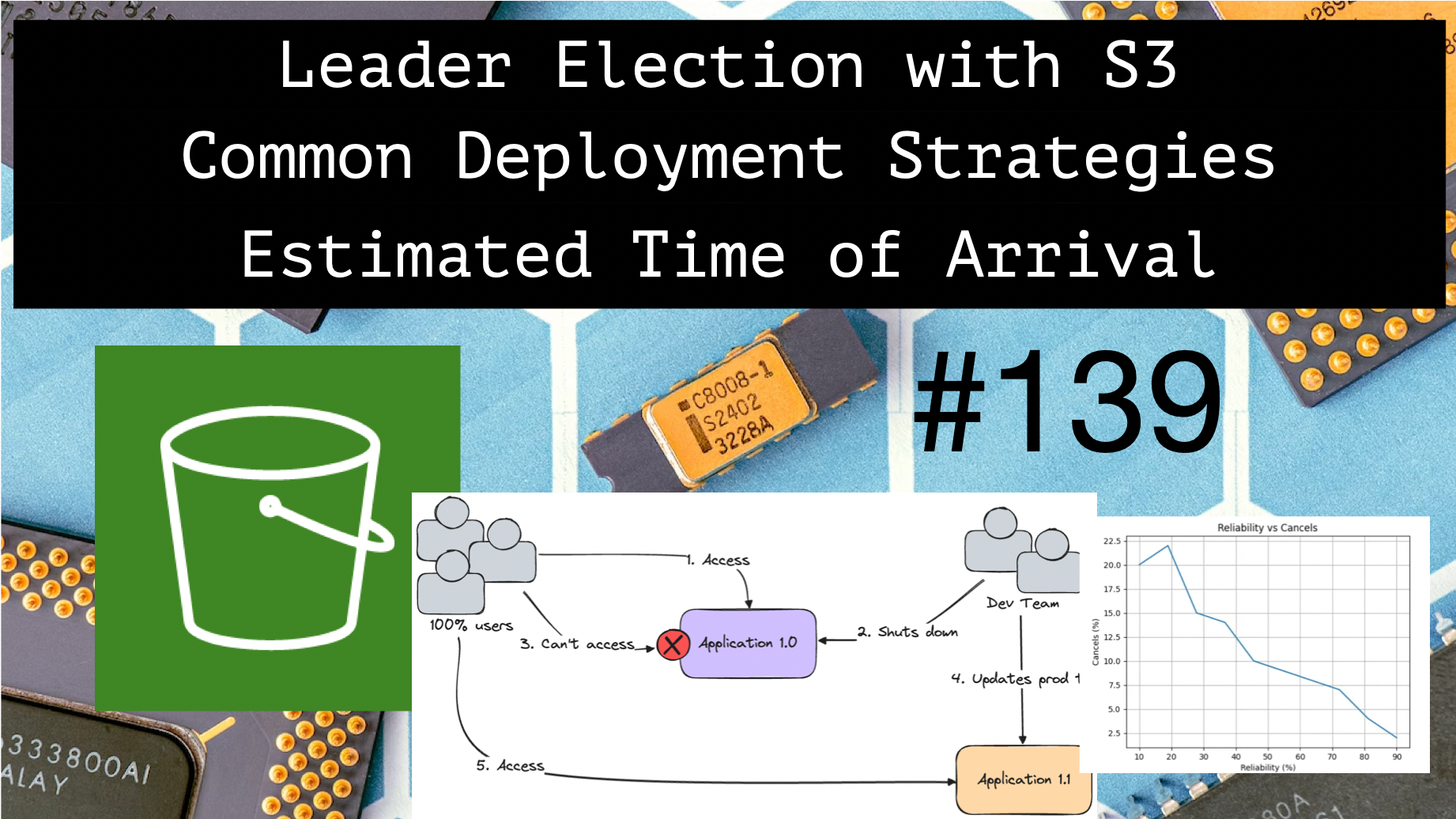Architecture Weekly Issue #139. Articles, books, and playlists on architecture and related topics. Split by sections, highlighted with complexity: 🤟 means hardcore, 👷♂️ is technically applicable right away, 🍼 - is an introduction to the topic or an overview. Now in telegram and Substack as well.
Sponsored
Depot Managed GitHub Actions runners offer caching that's 10x faster than GitHub's own solution, and at half the cost. It’s the secret to boosting your CI/CD pipelines without breaking the bank. Find out how it works!
Highlights
Leader Election with S3 Conditional Writes 🤟
Some leader election protocols rely on obtaining a lock of some sort. With the recent release of conditional writes on S3 - like creating a file only if it does not yet exist - you can actually implement a leader election protocol using this lock. Follow Gunnar Morling's post for details.

#distributedsystems
Common Deployment Strategies 👷♂️
Monoliths used to be deployed as a single unit universally for all the users at once. Bearing the risks of faulty deployment and shipping unoperational app, this strategy is subpar. That's why we have blue-green deployments, canary releases and rolling updates. Read about them in Fractional Architect newsletter!

#sre
Estimated Time of Arrival Reliability at Lyft 👷♂️
You open a ride-hailing app and see that the taxi can be at your place in 5 minutes. But how this estimation ends up in the app? Surprisingly, it's more complex than a factor of number of drivers and distance. Lyft is solving this problem through a tree-based classification model. Find out how.

#casestudy
Business Oriented System Design Course
"The quality of documentation and design skills has improved a lot for my engineer after he passed this course" - This is what Engineering Managers tell me as a feedback for the engineers who passed my Business Oriented System Design course. Do you want your EM tell the same about you? Join group #3 and bring your software architecture and system design skills to a new level. Engineers from Semrush, Bolt, Clyx, OpSec, Qase and other already advanced their careers. Now it's your turn. Only a week left as start on October, 18!Use your learning budget as invoices will be provided. Sign up here: https://vvsevolodovich.dev/business-oriented-system-design-course/
Follow-Up
6 API Gateway Configuration You Should Set 👷♂️
API Gateway can centralize authentication, help with rate limit, increase observability and improve performance through caching... if you set them right. Find the 6 configuration you need to take a look at while using AWS API Gateway.

#aws #api
Improving Application Availability: Redundancy and Persistence 🍼
Some tactics for availability include redundant instances, which require load balancing to operate. There are nice explanations of underlying problems and mechanics to apply to have that implemented smoothly!
#avilability
Infrastructure Drift Detection 🍼
You got you IaC solution nice and clear, however a production incident happen and you modify some structure right in the production. Now the prod and the configuration in terraform differ - that is called infrastrure drift. What to do about it? Grab an article!

#iac #cloud
Data Modelling example at ManyChat 🍼
At some point you will need an analytics platform for your business, and OLTP queries just won't cut it, so you will search for a DWH and seek how to put your data there. This is the moment of modelling your data for analytics - and ManyChat blog has a nice piece showing one of the approaches to do so with modified Data Vault modelling approach.

#dwh
Do not use secrets in environment variables and here's how to do it better 👷♂️
.env file frequently contains not only the urls and configuration parameters and guess what - api tokens as well. Grab a long read explaining why storing secrets in env variables is a bad practice for almost a dozen of reasons and how to do it better.

#security
Using HBase Quotas to Share Resources at Scale 👷♂️
Even if you're not using HBase per se, this post from HubSpot engineering blog can showcase how throttling and different strategies of rate limiting can help you building a resilient solution in the presense of sudden load spikes.

#performance #casestudy
Big thanks to Nikita, Constantin, Anatoly, Oleksandr, Dima, Pavel B, Pavel, Robert, Roman, Iyri, Andrey, Lidia, Vladimir, August, Roman, Egor, Roman, Evgeniy, Nadia, Daria, Dzmitry, Mikhail, Nikita, Dmytro, Denis and Mikhail for supporting the newsletter!


